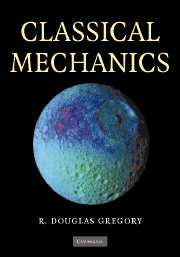Book contents
- Frontmatter
- Contents
- Preface
- 1 Newtonian mechanics of a single particle
- 2 Multi-particle systems
- 3 Analytical mechanics
- 12 Lagrange's equations and conservation principles
- 13 The calculus of variations and Hamilton's principle
- 14 Hamilton's equations and phase space
- 4 Further topics
- Appendix Centres of mass and moments of inertia
- Answers to the problems
- Bibliography
- Index
12 - Lagrange's equations and conservation principles
Published online by Cambridge University Press: 05 September 2012
- Frontmatter
- Contents
- Preface
- 1 Newtonian mechanics of a single particle
- 2 Multi-particle systems
- 3 Analytical mechanics
- 12 Lagrange's equations and conservation principles
- 13 The calculus of variations and Hamilton's principle
- 14 Hamilton's equations and phase space
- 4 Further topics
- Appendix Centres of mass and moments of inertia
- Answers to the problems
- Bibliography
- Index
Summary
KEY FEATURES
The key features of this chapter are generalised coordinates and configuration space, the derivation and use of Lagrange's equations, the Lagrangian, and the connection between symmetry of the Lagrangian and conservation principles.
Lagrange's equations mark a change in direction in our development of mechanics. Building on the work of d'Alembert, Lagrange devised a general method for obtaining the equations of motion for a very wide class of mechanical systems. In earlier chapters we have used conservation principles for this purpose, but there is no guarantee that enough conservation principles exist. In contrast, Lagrange's method is completely general and is not restricted to problems soluble by conservation principles. The method is so simple to apply that it is quite possible to solve complex mechanical problems whilst knowing very little about mechanics! However, the supporting theory has its subtleties.
Lagrange's equations also mark the beginning of analytical mechanics in which general principles, such as the connection between symmetry and conservation principles, begin to take over from actual problem solving.
CONSTRAINTS AND CONSTRAINT FORCES
A general mechanical systemS consists of any number of particles P1, P2, …, PN. The particles of S may have interconnections of various kinds (light strings, springs and so on) and also be subject to external connections and constraints. These could include features such as a particle being forced to remain on a fixed surface or suspended from a fixed point by a light inextensible string.
- Type
- Chapter
- Information
- Classical Mechanics , pp. 323 - 365Publisher: Cambridge University PressPrint publication year: 2006



